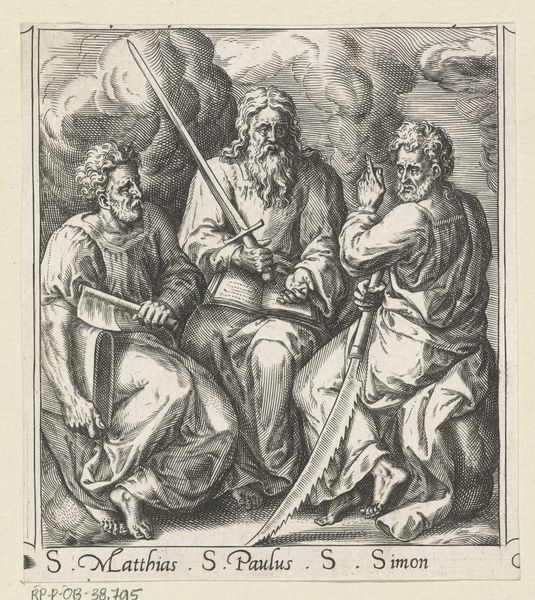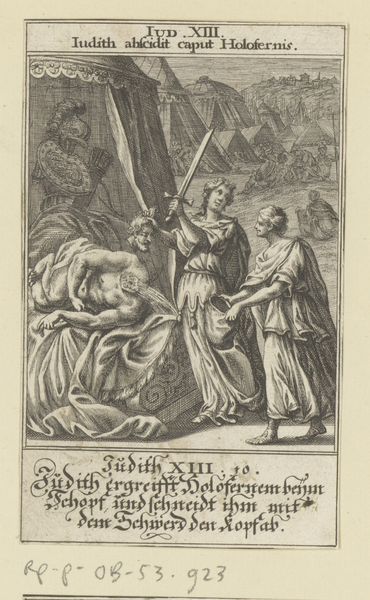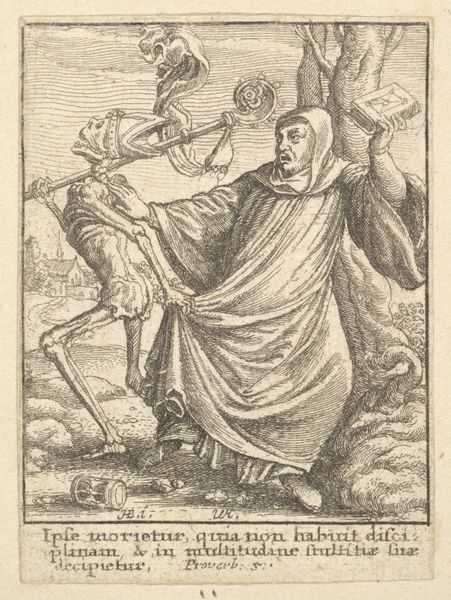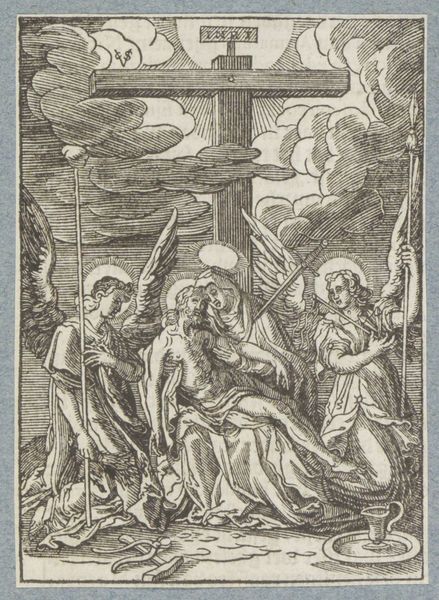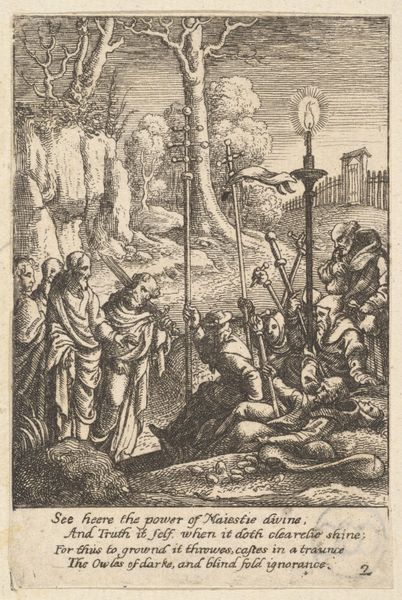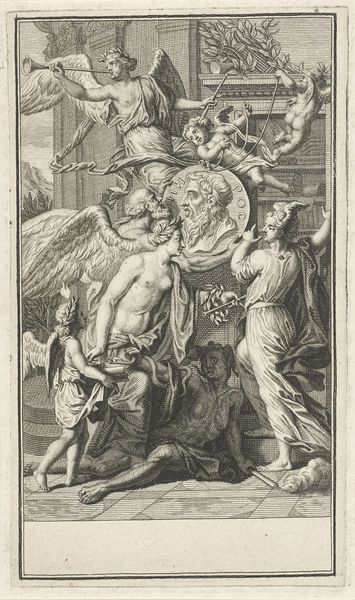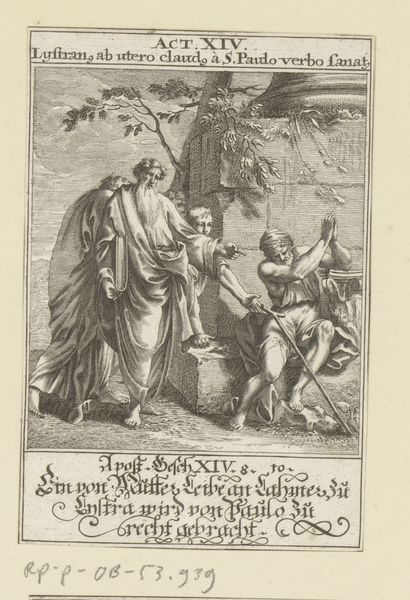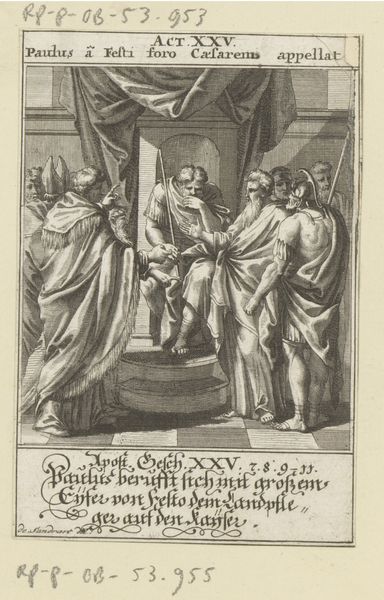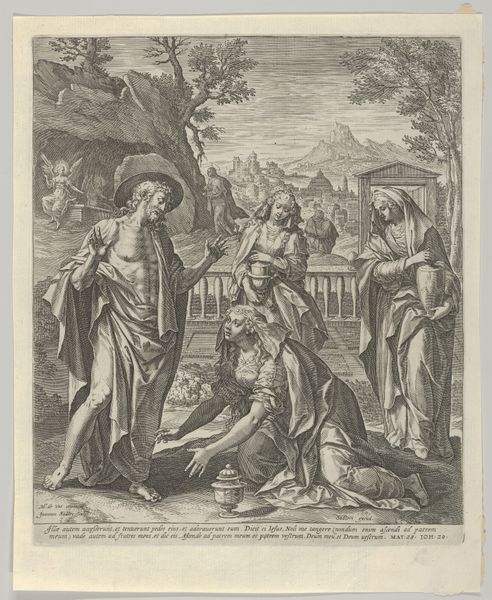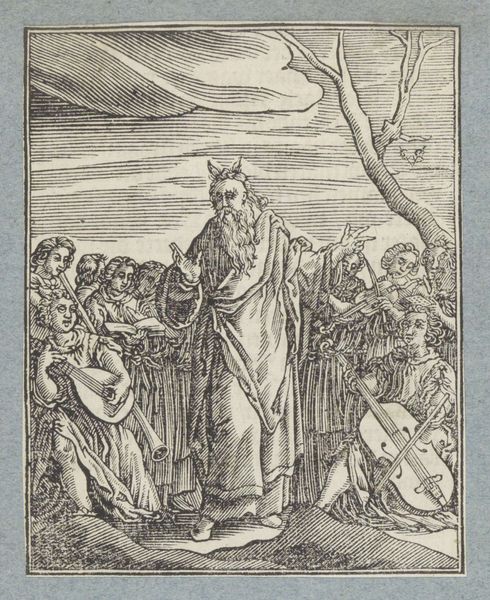
print, intaglio, engraving
#
portrait
# print
#
intaglio
#
old engraving style
#
figuration
#
history-painting
#
engraving
Dimensions: height 126 mm, width 110 mm
Copyright: Rijks Museum: Open Domain
Curator: This engraving, housed here at the Rijksmuseum, depicts "Three Saints: Jacobus Maior, Petrus, and Andreas." Its creation date is estimated somewhere between 1534 and 1640. Editor: The first impression I get is a rather somber mood. The figures are very close together, almost claustrophobic. And look at the detail in the robes, contrasted with the almost chaotic hatching in the sky. Curator: Absolutely. Focusing on the production of this intaglio print, consider the labor involved. Each line, each tiny mark was meticulously carved into a metal plate. These prints circulated widely, offering accessible religious imagery. What’s fascinating is considering how these repeated impressions shape devotion. Editor: Indeed. This print provided a potent means for disseminating religious ideals, reflecting the church’s investment in shaping public belief. The print provided the masses with depictions of holy figures to be seen and contemplated in various social settings. I notice Saint Peter prominently holding keys; the symbolism reinforces his role and papal authority. Curator: Good point! Now look closer. We can talk about materiality of those "keys" he holds in his hand; think about the metal that crafted these lines. It wasn't simply a technical matter; rather the materiality reflects a significant commitment from engravers producing devotional artwork for their market and patrons who in turn provided access to such iconography for believers through purchase or commission. Editor: And those details mattered. These sorts of prints reinforced the social hierarchy and church dogma; consider the Reformation era context, the Counter-Reformation and its effort to influence visual culture. This print enters directly into that narrative. How was something like this consumed by different classes? Curator: It’s fascinating how the accessibility of the print challenges the notion of high art. Crafting an artform made available on demand—there’s nothing precious about accessibility in this work which renders the high art/low art discussion pointless. The focus really should stay put on the dissemination practices that are happening around this particular medium. Editor: Yes! I think that’s one element making it still a very vital piece. Seeing an artwork like this now gives me a chance to trace those older religious structures. I mean seeing history printed! Curator: I agree, understanding art in the form it was disseminated unlocks incredible potential for learning to understand not just how art objects circulated in history, but the conditions that produced art in its various forms.
Comments
No comments
Be the first to comment and join the conversation on the ultimate creative platform.
